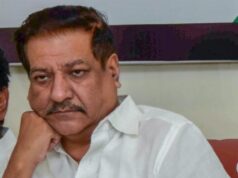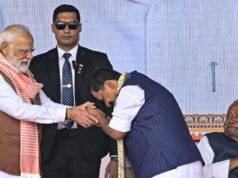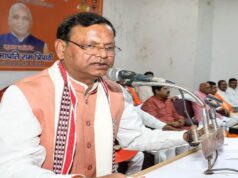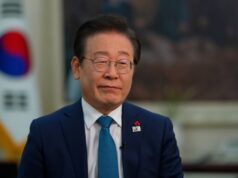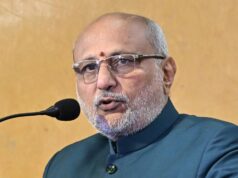Bihar is experiencing election fever. Internal tension has been resolved with the announcement of Tejashwi Yadav as the Mahagathbandhan’s (Grand Alliance) chief ministerial nominee. However, the National Democratic Alliance (NDA) has dispelled all rumors about the future of Chief Minister Nitish Kumar by announcing that he will once more serve as the coalition’s spokesperson and, should he win, will remain CM. From campaign stages, Bihar BJP officials are adamantly declaring, “Nitish again from 2025 to 2030.”
If there is any remaining ambiguity, it is within the bloc led by Congress. The Congress leadership, especially the Gandhi family, seems removed from the Bihar battlefield, despite the fact that the CM face issue has been resolved. Rahul Gandhi is noticeably absent now after extensively touring the state during the voter list revision earlier this year. Not included in the action is Priyanka Gandhi, who was once known for riding a motorcycle with her brother.
Rahul and Priyanka will eventually join the campaign, according to senior Congress politician Ashok Gehlot, but for the time being, the NDA is controlling the conversation. The Congress camp’s attempts to portray Rahul Gandhi as a Jan Nayak (People’s Leader), a designation traditionally held for Karpoori Thakur, Bihar’s first extremely backward class (EBC) chief minister, have particularly irritated the alliance. In retaliation, Prime Minister Narendra Modi has accused rivals of attempting to “steal” Thakur’s legacy.
Karpoori Thakur’s birthplace, Karpoorigram in Samastipur district, will be visited by PM Modi on October 24. He will speak at a sizable public gathering at the Samastipur airport ground after meeting Thakur’s family. This would be his first campaign event in Bihar since the election dates were revealed. “No social media team made Karpoori Thakur a Jan Nayak—the people of Bihar did,” Modi remarked earlier this month when he virtually inaugurated the Karpoori Thakur Skill University. He urged people to “stay alert” against anybody attempting to “appropriate” that honor.
Deliberate symbolism is used. In the 2020 elections, 58% of EBC voters backed the NDA, and Modi himself hails from a very underdeveloped community, according to Lokniti-CSDS data. According to the caste survey conducted in Bihar in 2022–2023, EBCs make up 36.01% of the state’s 63.13% backward population, making them a powerful force.
Karpoori Thakur’s Legacy and Conflicting Allegations
Long before the Mandal Commission, Karpoori Thakur, a barber by caste, acknowledged EBC deprivation. In his capacity as chief minister, he divided the backward quota into two sections: 18% for EBCs and 7% for OBCs, in accordance with the Mungeri Lal Commission findings. Nitish Kumar became the voice of this group in the 1990s, and as chief minister, he institutionalized EBC representation by implementing 20% reservation in panchayats and, following the caste survey, 25% in job quotas, though the latter is still pending in court. It’s interesting to note that Karpoori was the first to enforce prohibition in Bihar; Nitish revived this policy decades later.
On the other hand, RJD leader Lalu Prasad Yadav, who was thrice chief minister and is currently facing numerous corruption charges and a conviction in the Rs 1,000-crore fodder scandal, continues to assert that he is Thakur’s legitimate political heir. MP Pappu Yadav is hailing his son Tejashwi, who is currently the CM face of the Grand Alliance and has assets valued at over Rs 8 crore, as the “next Jan Nayak,” a declaration that detractors are deeming absurd.
A historical incident demonstrates Thakur’s modesty. According to senior writer Surendra Kishore, Thakur once wrote to then-MLA Lalu Yadav to request permission to use his jeep so he could drive home for lunch when he became hungry during an assembly session. “My jeep has no diesel,” Lalu said on a slide. Why don’t you purchase your own vehicle since you’ve been CM twice? Lalu would even mockingly refer to him in private as “Kapti Thakur” (deceitful Thakur), according to the late writer Sankarshan Thakur in The Brothers Bihari.
Rahul Gandhi’s ascension to the Jan Nayak title by the Congress seems more planned than natural. Jan Nayak Rahul Gandhi, written by Rakesh Pandey, was published in July. Gandhi was hailed as “the nation’s hope” in a campaign video that the Congress posted shortly after, portraying him as the voice of the voiceless, farmers, laborers, women, and young people. Rahul announced a 10-point “EBC Justice Pledge” during his visit to Bihar, pledging to abolish the 50% reservation cap, distribute land to the landless, earmark government contracts worth up to Rs 25 crore for them, and increase EBC quotas in panchayats from 20% to 30%.
However, as political analysts point out, making such pledges does not automatically turn someone into a Jan Nayak. What the Congress or the Gandhi family truly accomplished for EBCs during their tenure in power will undoubtedly come up for debate. When he enters the platform in Samastipur, Prime Minister Modi, who is infamous for his scathing election attacks, is anticipated to remind people of that record.
